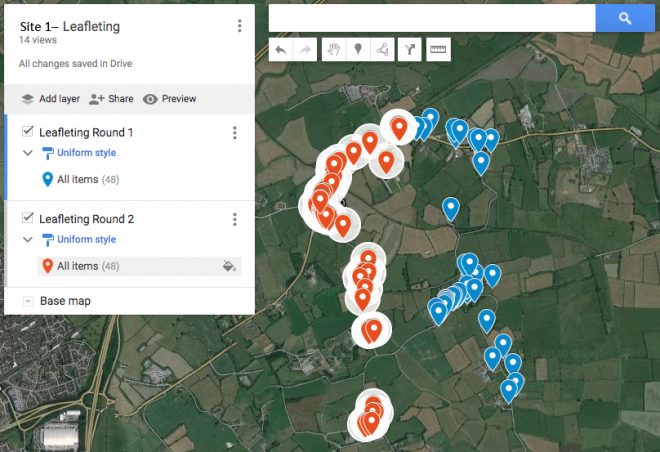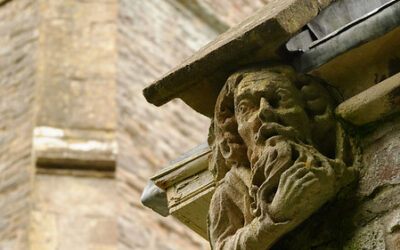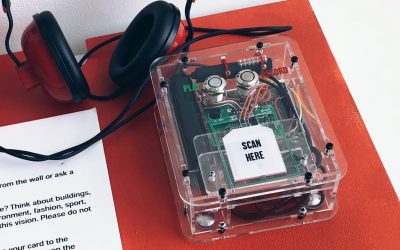Tim Senior
Stuart McClean
Ed McGregor
There is a recognised need to find new roles for our churches, helping them better serve communities and move towards long-term sustainability (a pressure recognised at the highest level by the Church of England). For the Churches Conservation Trust, their historic churches are to be enjoyed by everyone as places of heritage, culture, spirituality, and beauty. Their potential to support community, social, and economic life is still, however, to be fully understood. In “Let’s Gather In” we’re asking how CCT sites might serve their communities in new ways by hosting community-driven collaborative work that responds to pressing local needs. Our findings will be addressed elsewhere as they develop; here, we want to briefly explore some of the methodological challenges raised.
Every CCT site is different, each with its own connection to the the community and potential for future use. The shape and intensity of those interactions with a community foreground how you ask the question: What do communities want of their CCT site? Building a representative sample of a community’s interests and needs will be an important part of developing new roles for CCT sites. Any consultation process, however, holds a dual risk: first, of introducing biases into your sample that return only a limited sense of a site’s value and potential; and, second, of leaving unchallenged the disconnects that can exist between a community’s ambitions and the perceived role of a church site. (That gap, for example between “sacred heritage to be preserved” and a “pop-up community hub,” may be a largely conceptual, rather than practical, issue)
Get that Snowball Rolling
At a number of our project sites, a small but active volunteer network is serving as a springboard to reach further into their communities and gather valuable insight into community life, needs, and challenges. Here, we are using a simple snowball sampling methodology from the social sciences. In snowball sampling, a small initial cohort of subjects in a study are asked to nominate through their social contacts others who might be willing to participate in the study. Each round of subjects is similarly asked to identify future subjects, and so on. This process continues until the right sample for the study can be achieved. Whilst commonly used to reach into ‘hidden populations’ (for example those operating on the “margins” of society), here we’re seeking to reach parts of the community that may operate outside of the normal CCT social network. By asking CCT volunteers to nominate acquaintances both inside and outside of that circle (and targeting, where possible, change makers in different “communities of interest”), each cycle of recruitment can strengthen the representational qualities of the sample. At one of our sites, an initial volunteer’s interview led to ten others, spanning different generations of village residents, the wider CCT network, the parish council, and small business community; after COVID-19, we will seek to expand that sample in new directions.
Indeed, a key strength of the snowball sampling technique is that any biases that may emerge in a study sample can also be addressed in subsequent iterations. To aid this, open-source data services can be useful in building a wider picture (albeit low-grain) of a community’s social structure or composition. This can help reveal, for example, where any gaps in age groups or professions might be present in a sample. Readily available sources include local area reports with demographic and labour market data from NOMIS (a free service provided by the UK Office for National Statistics; the ONS), information on registered UK businesses from Companies House (through their ‘Free Company Data Product’), and data on business activity, size, and location, again from the ONS. Building a sample through sequential cycles of recruitment means that snowball sampling can take time to conduct, but it also creates many different ‘routes’ through a community to explore the potential of new site uses, i.e. it is an approach that is readily repeatable and able to generate new insight. It is also a sampling method that can help reveal (and quantify) the wider social network that connects a CCT site into a community.
Going Door-to-Door
Where a snowball sampling approach is proving difficult to initiate, we are trialling “drop-in sessions” at the church site advertised through a community-wide leafleting campaign. Such a campaign has a number of benefits and drawbacks: On the one hand, it can be conducted quickly and used to reach a large initial population whilst also avoiding some of the biases inherent in traditional dissemination routes (e.g. through a village or parish newsletter). On the other hand, it is both resource heavy (especially at more sparsely populated rural locations) and might not be suitable to frequent repetitions (especially within a small community).
At one rural site, leaflets advertised an opportunity to “Have Your Say,” with four 2-hour events scheduled during the working week at the church site (16:00-18:00 and 20:00-22:00 on two consecutive days in mid March). Events were minimally CCT-branded, with attention drawn to reporting on community life exclusively. In total, 94 leaflets were distributed across all households and businesses in the community, with 52 people engaged directly in conversation about events. Using free-to-access Google Mapping tools, we calculated that this leafleting activity covered a 13 km route within a 2km2 area, and took a total of 5.5 labour hours to complete. Of those engaged, 10 were enthusiastic about attending, 22 interested, 16 uninterested, and 4 negative. There was, however, difficulty in translating interest into attendance: Our events had 5 participants, all of whom were already associated with the church, village hall, or parish council.
There are different ways to make sense of this low turnout (from the bad weather on both days to a wide-spread fatalism). It might be that a leaflet campaign could succeed under different conditions or at a different site; indeed, it could be insightful to test this approach at a number of CCT locations, correlating success with other measures of ‘community identity’ to determine where it may hold merit within the CCT portfolio at large. Whatever the explanation, an important question arises around perceived barriers to participation and how they might be broken down. Can, for example, innovative new methods help incentivise involvement by delivering the value of such research more directly into communities themselves?

Google My Maps
A simple mapping tool to help make sense of a leafleting campaign
A Co-creation Model
The use of semi-structured interviews (independent of the sampling method) can be a powerful way to learn about community life and engage in conversations around possible futures for church sites. The format itself, however, can be a barrier to participation. The use of an audio-recording device is intimidating to some, and the time-confined nature of interviews can pressure some participants to “say the right thing” or give ready-at-hand answers where closer scrutiny or reflection might be beneficial. We can ask: How else might people be given a voice in questions of place change?
Our third approach (funded through the Brigstow Institute at the University if Bristol) is to develop a “co-creation” model with communities, one where participants can make considered-contributions at a time of their own choosing. Here we are developing an interactive device to be installed at CCT sites building on the open-source ‘Jigsaudio’ system. Jigsaudio allows short audio files to be recorded and associated with a “tagged” object. At a base-unit, anyone with a tagged object can either play back an associated recording or make a new recording if none exists. These objects are then installed into a physical installation built around the base-unit. Working with community partners a community storybook can be built up over time, the basis for wider discussion around community life and church-futures through workshop events.
The strength of this approach is two-fold: On the one hand, it can centre a wider, public conversation around community life, with a “slow technology” approach helping drive more-considered and reflective interactions; on the other hand, it allows new ideas about the potential of church sites to be introduced from outside the community, a route to shaping that discourse over time. For example, working with medievalists at Bristol University, we will introduce ideas from the long-history of CCT sites (back to the medieval period) that will help challenge a widely held status quo that historic churches are in principle incompatible with a wider, multi-faceted community-serving role today.
Responding to COVID-19
Under COVID-19 conditions, this work is currently on hold, but we are ready to re-engage as soon as possible. People’s experiences of COVID-19 lock-down will likely feature heavily in how we think to the future of our communities and CCT sites: Capturing those experiences will be critical if we are to show how our historic churches can play a role in building resilient communities of the future.

